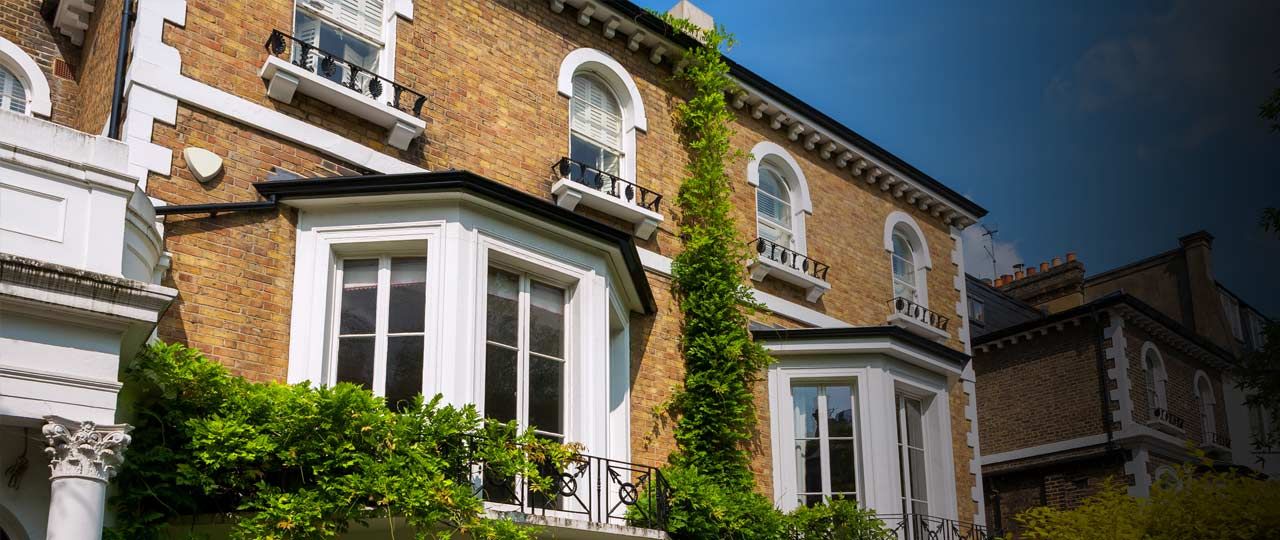
The Victorian architectural movement significantly altered the landscape of the United Kingdom, due to its visually appealing, simpler style and gorgeous, manicured landscaping. Read on for more information on this popular architectural style and the features that make it distinct.
The continuing influence of the Victorian era seems boundless. With strong stylistic elements and sturdy designs, Victorian architecture remains a popular choice for property investors. An additional bonus is the potential to create beautifully sculpted gardens, adorned with Victorian-style flourishes that symbolise man’s dominion over nature.
Key features of Victorian architecture
Victorian architecture underwent some significant changes over the lengthy period of Queen Victoria’s rule, meaning there are elements that are tied to the specific era of the property’s establishment.
Early Victorian-era houses, heavily influenced by the Gothic revival movement, are complete with porches, wooden trims, roof gables, and sash windows.
Latter-era Victorian properties often have such design details as slate roofs, patterned or coloured brickwork, and a strong use of terracotta tiles. Expansive windows and carved stonework are usually a telling sign of Victorian architecture.
Influence of Victorian architecture
The Victorian era had a significant impact on the face of the United Kingdom, and its influence on architecture is almost untold. Even now, the evolution from grand properties for the upper class, to simpler, durable properties for the burgeoning lower class, has an effect on the newer properties built across the country.
With the introduction of iron and glass, the nation gained stunning properties that continue to draw admirers. The Royal Albert Hall, the Houses of Parliament, Balmoral Castle and other striking buildings are seen as properties to emulate in modern architecture.
Victorian landscaping trends
A key feature of the Victorian property was the garden. The influence of the Victorian era’s obsession with exploration and burgeoning new technology meant that the landscape of this type of property was perfectly manicured and meticulously planned.
The rise of the middle class and the introduction of suburban living meant that gardening became a more common pastime, even across class divides. The dominion of man over nature was epitomised by the formal garden, or “parterre”, constructed with plant beds in symmetrical patterns, divided by organised pathways. Even in simpler properties, a front and rear lawn became common.
Gardens were used as displays for the results of Victorian expeditions. Plant collections sourced from across the globe were cultivated in ever-brighter colours. Rockeries became a fad, as trips to mountainous parts of the world grew in fame. The progress of glasshouse technology meant that even difficult-to-culture plants became accessible, on a heretofore unprecedented level. The arboretum became a place to feature trees collected from the far corners of the planet, to be enjoyed at home.
Victorian garden features
Aside from the previously mentioned glass greenhouses, parterres, rockeries and arboretums, there were a few key features that were common to most Victorian gardens.
Trees were strategically placed to shade vital parts of the house where direct sunlight was not desirable, to frame the driveway to the house, or to create a privacy screen from the street in the city.
Shrubs became popular as a delineation between properties, or for marking out pathways. It was preferable to use a tamed shrub, rather than a wooden fence, to line a property. If the property were fenced, it would likely have used cast iron, both for its ornamental value and for its durability. More rustic wood would have sufficed in less ornate properties.
Ornaments, pavilions, garden seats and trellises were used to make gardens pleasing to the eye. Birdbaths and manufactured fish ponds were often included to encourage wildlife, in a restrained manner.
Examples of Victorian gardens
There are several examples of excellent Victorian gardens all across the United Kingdom. Given their popularity, they are not hard to find, both in the city and in the countryside.
Biddulph Grange in Staffordshire is one of the most striking examples of Victorian gardens in the UK. Designed as a set of connected “rooms” by Victorian horticulturalist James Bateman, the sections are dedicated to the different parts of the world where Bateman collected his plants. You can explore China, Egypt and the Himalayas, all in one space.
For Victorian glasshouses, there is no greater specimen than those at Kew Gardens. Temperate House is the largest Victorian glasshouse in the world, having been restored to its former glory in recent years.
Discover stunning Victorian properties currently for sale around the United Kingdom.
Read more in our Strutt & Parker Guide to Victorian Homes.
